Sensors already equip a range of tools to enhance monitoring capacity for conservation. Some of the higher bandwidth technologies, like camera traps and acoustic monitoring systems, have been essential elements of the conservation toolkit for decades, and thus have enough users that we've created dedicated WILDLABS groups to address them. But a whole range of lower bandwidth sensors beyond these core technologies are being increasingly integrated into conservation monitoring systems, and offer rich new insights into the wildlife and ecosystems we're all working to protect. As with many technologies, cost and access have historically been challenges to the adoption of new sensors, but with low-cost and open-source solutions on the rise, we're excited to see what the future of this space holds.
Getting Started with Sensors:
- Watch Shah Selbe's Tech Tutors episode on scaling FieldKit, an open-source conservation sensor toolbox, from a project to a successful conservation tech product.
- Check out our Virtual Meetup about Low-Cost, Open-Source Solutions in conservation tech, including a talk by Alasdair Davies on the Arribada Initiative's work with thermal sensors in early warning systems.
- For a more in-depth introduction, watch the first video in our datalogger mini-series: Freaklabs: How do I get started with Arduino?
In this group, you'll meet others who are using and innovating diverse sensors in their work, discuss ways to make sensors more effective & accessible for conservationists, learn about what sensors are already helping us accomplish in the field, and have the opportunity to ask and answer questions. Join this group to get started!
Header image: Emma Vogel, University of Tromsø
No showcases have been added to this group yet.
Interested in bioacoustics
- 0 Resources
- 0 Discussions
- 14 Groups
- 0 Resources
- 6 Discussions
- 4 Groups
- @NevilleCLS
- | He/Him
CLS (Collecte Localisation Satellites)

- 0 Resources
- 1 Discussions
- 14 Groups
- @jmondragon
- | He/Him
- 0 Resources
- 1 Discussions
- 6 Groups
I am a biology undergraduate student who is interested in the field of wildlife conservation and has skills in field observation and identification
- 0 Resources
- 0 Discussions
- 12 Groups
- 0 Resources
- 0 Discussions
- 6 Groups
- 0 Resources
- 5 Discussions
- 8 Groups
Department of Conservation (New Zealand)
I work with the Terrestrial Biodiversity Team at the Department of Conservation, New Zealand. I'm interested in machine learning and spatial data science.
wekaResearch.com | doc.govt.nz

- 0 Resources
- 9 Discussions
- 4 Groups
GreenLab


- 0 Resources
- 20 Discussions
- 8 Groups
McMaster University
Developing a hand held genetic tool for real time wildlife detection

- 1 Resources
- 0 Discussions
- 2 Groups
- @MattyD797
- | He/Him
PhD Student | Cornell University | Smithsonian Institution; My focus is in computational ecology within fishery acoustics


- 0 Resources
- 16 Discussions
- 12 Groups
As a fresh electrical engineer, I am passionate about leveraging technology for biodiversity monitoring, logging, and poaching detection in tropical regions.
- 0 Resources
- 0 Discussions
- 9 Groups
Article
How does tracking technology meet the many challenges specific to monitoring birds within their home ranges and over long distances during migration? WILDLABS community member Virginie Perilhon from Xerius Tracking...
23 April 2020
Article
At the 2018 London Illegal Wildlife Trade Conference, we announced the WILDLABS Tech Hub, an accelerator programme created to support the development and scaling of groundbreaking technological solutions addressing the ...
13 April 2020
In the third part of his series of case studies focusing on preventing human-wildlife conflict within communities, Aditya Gangadharan looks at how one village in North Bengal maximised the potential of an early alert...
10 April 2020
The Monterey Bay Aquarium Research Institute's MARS ocean observatory may someday make conducting deep-sea research more accessible and affordable thanks to Deep-Sea Connect, their new wireless system engineered to ...
31 March 2020
Community Announcement
Our second WILDLABS Community Call took place on April 1st to continue the discussion started by Ben Tregenna in our Data Science group, in which he suggested the idea of submitting a collaborative entry to the X-Prize...
30 March 2020
Trapped inside during the COVID-19 quarantine and looking to engage with conservation science without leaving your desk? Citizen science projects like those on Zooniverse offer a great opportunity to impact scientific...
18 March 2020
Machine learning is rapidly expanding as a useful field research tool, but its complexity can intimidate even seasoned tech conservationists. Edge Impulse aims to make machine learning solutions accessible,...
16 March 2020
Article
Aditya Gangadharan's latest case study looks at how sensor technology can provide solutions for human-wildlife conflict instances along the Indo-Bhutan border. This project, which aimed to get the local community...
11 March 2020
Using technology in the field allows us to innovate new solutions to very old problems like human-wildlife conflict, but are you giving enough consideration to how your high-tech tools fit into long-term plans? Before...
9 March 2020
2020 marked our fifth year holding our annual #Tech4Wildlife Photo Challenge, and our community made it a milestone to remember. Conservationists took to Twitter last week to share their best high-tech snapshots from...
4 March 2020
The 2020 Tusk Awards are now accepting nominations of outstanding individuals who have made a significant impact on conservation in Africa. These nominations offer the rare and exciting opportunity to honor your peers...
3 March 2020
Are you ready for the Plastic Data Challenge? This global contest wants your innovative ideas for improving the plastic waste management and recycling chain in South and Southeast Asia. Participants can consider...
3 March 2020
August 2025
event
September 2025
event
March 2026
September 2024
event
17 Products
Recently updated products
121 Products
3 R&D Projects
84 Organisations
Recently updated products
Recently updated R&D Projects
Recently updated organisations
| Description | Activity | Replies | Groups | Updated |
|---|---|---|---|---|
| Will your startup be involved in sensor networks for conservation? I'm very interested. Currently we create sensor networks for developmental infrastructure and agriculture... |
|
Sensors | 6 years 5 months ago | |
| Hi everyone. I'm Akiba and I'm an engineer by trade specializing in wireless sensor networks and communications. I generally work with groups like World Bank on... |
|
Sensors | 6 years 5 months ago | |
| Subcutaneous pittags that also read temperature (frustratingly) read only a limited range of temperatures - however, I hear that can be... |
|
Sensors | 6 years 6 months ago | |
| Hi Ted, This is all very interesting. The solution you describe seems eminently doable and in fact quite cheap. So doable and cheap that it may behoove one to... |
|
Sensors | 6 years 6 months ago | |
| Yes, I agree it's a tough problem - i'm certainly stumped ;) but thanks so much for your reply and counter question - the goal is to find these gillnets and... |
|
Sensors | 6 years 8 months ago | |
| Hi Tony, I'm leading a cross disciplinary group of researchers at Deakin University in Australia to build new technology for monitoring wildlife and engage citizen scientists... |
|
Sensors | 7 years 4 months ago | |
| The current project is in open plains. From a handler perspective the distance will be from 20m -100m. I will be working at night so it will be looking for me target, the Plains... |
|
Sensors | 7 years 4 months ago | |
| @hikinghack used twitter to flag a thread on hackteria that members of this group might be interested in about DIY time-lapse soil... |
|
Sensors | 7 years 4 months ago | |
| Also if you are still looking for a solution this was published earlier this year and gives recommendations for soundscape microphones : http://onlinelibrary.wiley.com/doi/10... |
+5
|
Sensors | 7 years 9 months ago | |
| If anything belongs in the 'have you seen this' group, it's this project: Researchers at Binghamton University have created... |
|
Sensors | 7 years 10 months ago | |
| The University of Washington is reporting that they've shattered the long-range communications barrier for devices that consume almost... |
|
Sensors | 7 years 11 months ago | |
| My own experience is with the FLIR iphone attachment, just informal testing, but hasn't been that great at finding animals. I also think it would work better in the... |
|
Sensors | 7 years 11 months ago |
Research Technician - Unoccupied Aircraft Systems Pilot and Geospatial Analyst
10 August 2022 10:40pm
3yr Postdoctoral Associate: Remote Sensing and Unoccupied Aircraft Systems
10 August 2022 5:29pm
Sulcata tortoise tracker options
8 August 2022 10:07pm
CERES TAG
22 July 2022 3:36am
The battery challenge - how to reduce battery waste
8 February 2019 2:00pm
15 July 2022 10:09pm
So-called "Li-Ion AA" batteries are a potential alternative to NiMH for applications requiring AA form-factor batteries. These "batteries" contain internal power converter to go from Li-Ion cell voltage (3.7V) to AA standard 1.5 Volt. Based on lab (not field) experiments, they perform better than NiMH over temperature, and have a longer lifetime, though they are more expensive. I suspect they have the same (eventual) disposal issues.
Deep Tech: Rechargeable Li-Ion AA Batteries for Trail Cameras - Winterberry Wildlife
I report on capacities of EBL, Pownergy, and Tenavolts rechargeable Li-Ion AA batteries under trail camera load and temperature conditions.
Trail Camera Batteries: Internal AA-Cell Options - Winterberry Wildlife
Trail cameras need power. In this post, I cover primary and rechargeable trail camera batteries including capacities and a selection guide.
15 July 2022 10:16pm
On the topic of potential sources for harvested power, and in the category of "out there"... I have spent some considerable (likely too much) time exploring harvesting power from diurnal temperature variation using thermal reservoir(s) and thermo-electric generator(s). The physics is not too bad, but the engineering is a bear. Project currently on hold, but if someone is interested, happy to discuss.
Earth Species Project - Senior AI Research Scientist
15 July 2022 6:40pm
Fast Company Feature: Smart Parks
14 July 2022 4:19pm
A Triphibian Surveillance Vehicle
9 July 2022 2:23pm
Conservation Technology and the Supply Chain
16 June 2022 2:27pm
Multiple Roles with Rainforest Connection
16 June 2022 9:15am
Join Seeed’s “IoT Into the Wild Contest for Sustainable Planet 2022” on Hackster to Get 100 Free Hardware and to Win $14,000+ in Prizes!!
14 June 2022 11:04am
Join Seeed’s “IoT Into the Wild Contest for Sustainable Planet 2022” on Hackster to Get 100 Free Hardware and to Win $14,000+ in Prizes!!!
14 June 2022 9:14am
Video: Delivering edge computing on Robinson Crusoe Island (Chile) to preserve biodiversity
13 June 2022 2:08pm
Nutrient sensors - affordable, user-friendly, effective - do they exist?
26 April 2022 12:49pm
6 May 2022 7:08pm
Hi Samantha,
This looks like a really interesting and beneficial project. Wishing you all the best with it.
Are you scouting for sensors that are archival and deployed / recovered over set period of time, or do you need telemetry / daily / hourly data to monitor change from tethered buoys etc? We are working on a similar solution with another partner, although not with microfuid-based sensors, but there are similar barriers regarding cost reduction and data collection.
Kind regards,
Alasdair
12 May 2022 3:43pm
It sounds like you're looking for multiparameter probes to deploy in the water to log in situ readings as part of the baseline you want to establish, and you might be deploying BRUVs, doing video transects, or taking soundscapes in addition, if I'm not too far off the mark.
The multiparameter probes will run you around USD10k each, kitted for let's say pH, conductivity, DO, turbidity, nitrate, and temperature. If you can rent these probes and the manpower to run them, that may be the best option if local expertise is lacking, as there are subtle gotchas. You might want to look into an automatic winched system which raises and lowers the probe, so you get readings throughout the whole water column. This may not be much more expensive than having 3 probes (at surface, bottom, and mid-depth). Other advantages include reduced biofouling (since the probe parks in air) and potentially reduced maintenance load due to this. But the disadvantages include fishers tying up to the system and boats colliding with it, and birds pooping on it, all of which have happened to me.
4 June 2022 7:55pm
What exact nutrients or parameters are you trying to measure?
Post-doc in Multi-Sensor Fusion for Animal Biomechanics
1 June 2022 9:56am
UKAN+ Monitoring UK Biodiversity Symposium 15-16th June
31 May 2022 2:58pm
UCL East Light Fabrication Workshop Manager
31 May 2022 11:12am
WILDLABS Virtual Meetups Season Four: Tracking Progress
29 April 2022 9:57am
Join the Black Mammalogists Week Hackathon!
19 April 2022 12:00am
Spotting primates w/ thermal scope
7 April 2021 1:33am
14 April 2021 2:02pm
Thanks, Carly. I did see this and didn't glean much from it, if I'm honest. Some more specifics on features, prices and tradeoffs when selecting a unit would've been welcome.
14 April 2021 8:42pm
Yeah, it did seem fairly general, but figured I'd throw it in.
I just actually came across this on Twitter - https://twitter.com/ElieDoesEcology/status/1380708784050331651?s=20. Perhaps worth shooting the authors of this paper an email on what tech they used/any advice?
4 April 2022 3:02pm
Iray PH35. like a DV . thermal camera. 640*328,35mm. could make videos. 2400 USD, china product, easy ship to Vietnam.
1km is the range to check monkeys, It is better to connect with your laptop or iPad when you are looking for wildlife, big screen for a good view.
Apply now: Women in Conservation Technology Programme, Kenya
8 March 2022 12:00am
Opportunity: Graphic Designer
8 March 2022 12:00am
Scale with data logger
7 January 2022 4:25pm
18 January 2022 1:23pm
Hi,
Can you clarify what you mean by "does not work"?
If I were to guess, I'd say the firmware temperature compensation tables for the load cell tops out at 40 deg C (104 deg F). Everything else should still function to 70 deg C, which is the most common and most lax rating for electronic components.
If this is the case, then the scale probably still retains precision (output is repeatable) even if it is inaccurate (output is wrong-ish), so it's possible to calibrate it. This could be as simple as tabulating the measured weights of standard weight samples at different temperatures, to adjust the output of your scale in post processing. Unfortunately this means you also need to log the temperature, and you'd want to store the scale at close to ambient temperature so it quickly equilibrates (a good idea regardless) when you need to use it.
The race to save California's rarest butterflies
29 November 2021 12:00am
Choosing the right IoT connectivity solution
19 November 2021 12:00am
ECG/heart rate & body temperature sensor
13 October 2021 4:43pm
15 October 2021 9:51am
Hi Guy,
Sparkfun carry an ECG module, but I don't know if this will work with sheep/goats. They've got lots of temperature sensors too, but I would look into something like MAX30205 if you need accuracy.
5 November 2021 6:28pm
Do you mean the sensor itself (that you're going make a tag out of) or a datalogger that records heart rate (sensor incoporated into a tag already)? Vectronic make some good terrestrial animal physiological sensors.
(trial) Habitat use within enclosure
5 November 2021 2:20pm
Proximity detection in koalas
12 August 2021 8:20am
24 October 2021 4:45pm
A great proximity system you've developed @LuciKirkpatrick ! Amazing! I am curious how you deal with having tags in receive mode long enough to ensure a contact is logged? What's the chances of a contact being missed because a transmission doesn't overlap with a receiver being on? It seems like not very often given the comparison with camera trap data!
Thanks so much for sharing and looking forward to reading more about the build.
Cheers,
Rob
4 November 2021 9:15am
Hi @Rob+Appleby , thanks for your kind words about our system! We ge around this by ensuring that the tag is in receive mode at least as long as the pause between two proximity transmissions. There is still the odd chance that some interference occurs or two or more transmissions collide, but generally it is pretty reliable.
4 November 2021 12:26pm
Hi @LuciKirkpatrick
Aha! A great strategy. I thought it might have been a 'wake on radio' solution, but the overlapping wait time is a really nice solution. Again, a great solution and looking forward to more build details etc., as they arrive.
All the best,
Rob
Opportunity: μMoth v1.1 Group buy
4 November 2021 12:00am
Tech Tutors: How do I turn a conservation tech project into a product?
27 October 2021 11:23am


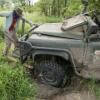












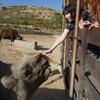






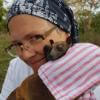










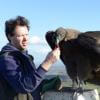

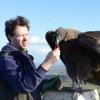

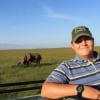

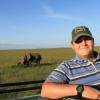



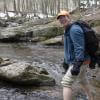


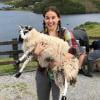












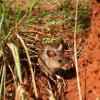


29 June 2022 8:47pm
Realizing I'm hopping onto this thread late, but I think one of the easiest ways to handle batteries is simply to work to minimize energy consumption--identify areas where we can improve deployment duration while generating comparable ecological knowledge. For example, in the case of the acoustic sensors I work with, can we reduce sample rates and still pick up our species of interest? Can we use a sparser duty cycle while still generating sufficient information to answer whatever our relevant questions are?